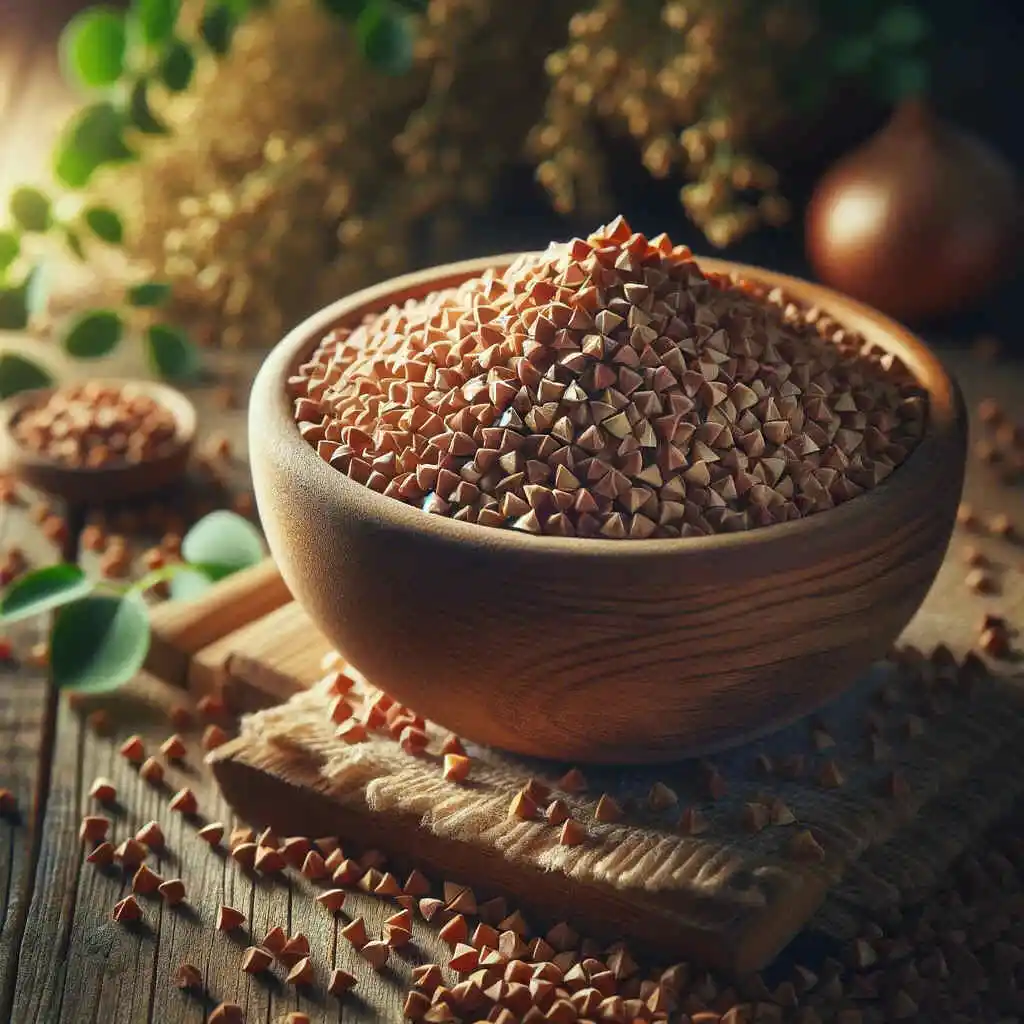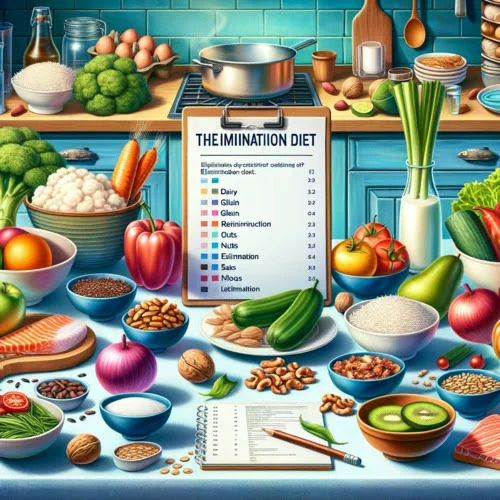As an expert in dietetics and nutritional science, I am often confronted with questions about the best sources of nutrients. Among the many grains and cereals, buckwheat deserves special attention. It’s not just another cereal on your grocery store shelf; buckwheat is a true superseed that stands out because of its rich protein and antioxidant composition.
Unlike traditional grains, buckwheat is not actually a member of the cereal family. It is closer to rhubarb and sorrel, which makes it a unique source of nutrients. Buckwheat has recently been gaining popularity around the world, especially among health food enthusiasts. Its unique properties make it not just a healthy addition to your diet, but a powerful tool in promoting overall health and well-being.
History and distribution of buckwheat
As we delve into the history of buckwheat, we discover its amazing journey across cultures and continents. Originating in northern Asia, buckwheat was domesticated thousands of years ago. Its cultivation began in China and Japan, where buckwheat still plays an important role in local cuisine. From there it spread to Europe and Russia, where it became known as a valuable and versatile foodstuff.
In the Middle Ages, buckwheat was one of the main sources of food for many Europeans, especially in Russia, Poland and France. Its popularity was due not only to its nutritional value, but also to its resistance to cold climatic conditions, making it an ideal choice for cultivation in more northern regions.
Buckwheat lost a little of its popularity in the 20th century with the advent of more diverse crops. In recent decades, however, it has become popular again, thanks to a growing interest in healthy eating and natural products. Today buckwheat has a prominent place on store shelves around the world, being not only part of traditional dishes, but also a key ingredient in modern culinary creations.
Useful properties of buckwheat

Buckwheat is a veritable treasure trove of nutrients. Rich in high-quality protein, it contains all nine essential amino acids, making it an ideal choice for vegetarians and vegans. In addition, buckwheat is an excellent source of fiber, which not only helps normalize digestion but also keeps you feeling satiated for a longer period of time. It also contains B vitamins, magnesium, iron, phosphorus, copper, zinc, manganese and potassium, all of which are key to maintaining a healthy and properly functioning body.
Health benefits
Buckwheat has positive effects on many aspects of health. Its high fiber content and complex carbohydrates help in maintaining optimal blood sugar levels, which is especially important for people with diabetes. Also, thanks to the presence of flavonoids such as rutin, buckwheat helps strengthen blood vessels and improve cardiovascular health, reducing the risk of hypertension and other heart diseases.
Antioxidant properties
One of the key aspects that make buckwheat a true super seed is its antioxidant properties. Antioxidants such as rutin and quercetin play an important role in fighting oxidative stress and reducing inflammation in the body. These substances may help slow down the aging process, boost immunity and prevent chronic diseases, including some cancers. Thus, regularly including buckwheat in your diet can be an important step toward maintaining long-term health and well-being.
Buckwheat in diet and cooking
Buckwheat is a versatile product that can be used in a variety of culinary experiments. Traditionally, it is used for cooking porridge, which serves as an excellent base for both sweet and savory dishes. Buckwheat is ideal for salads, side dishes and as an alternative to rice in pilaf or risotto recipes.
However, buckwheat is not limited to traditional dishes alone. It can be used in baked goods such as breads and pancakes, giving them a unique nutty flavor and added nutritional value. Buckwheat flour is a great gluten-free alternative to regular wheat flour, making it a popular choice among those following a gluten-free diet. It is also fun to use sprouted buckwheat in smoothies or salads, maximizing its nutritional benefits.
Dietary value of buckwheat
Buckwheat has a special place in dietary and therapeutic nutrition. Due to its high protein and fiber content, it promotes a long-lasting feeling of satiety, which is especially valuable for weight loss and weight control. Its low glycemic index makes it a suitable choice for people with diabetes. In addition, including buckwheat in the diet helps improve digestion and can help prevent and treat gastrointestinal diseases.
By using buckwheat in your diet, you can not only enrich your diet with valuable nutrients, but also add new flavor notes and textures to your cooking. This makes buckwheat not only healthy, but also a versatile product suitable for a wide variety of dishes and diets.
Use of buckwheat in traditional and folk medicine
Buckwheat has for centuries occupied an important place not only in nutrition, but also in the traditional and folk medicine of many cultures. Its unique composition makes it useful not only as a food product, but also as a means of treatment and prevention of various diseases.
– In traditional medicine: Buckwheat has often been used to improve blood circulation and strengthen the vascular system due to its high rutin content. Rutin helps to strengthen capillaries, lower blood pressure and prevent blood clots. Buckwheat has also been used to treat conditions such as hemorrhoids and varicose veins due to its anti-inflammatory properties.
– Pharmaceuticals: Buckwheat is used to make various pharmaceutical preparations. Buckwheat extracts, especially rutin, are used in the production of drugs aimed at strengthening blood vessels and improving blood circulation. These preparations are widely used in cardiology and angiology.
– In folk medicine: Buckwheat has traditionally been used in folk medicine to treat a wide variety of ailments. For example, buckwheat decoction has been used to improve digestion and relieve symptoms of diarrhea. Buckwheat flour has been used as bruises and compresses to treat eczema and other skin diseases. Buckwheat-filled pillows are also popular for headaches and cervical osteochondrosis due to their massaging and relaxing effect.
Overall, buckwheat is not only a valuable food product, but also an important component in the world of traditional and folk medicine, offering many ways to support health and well-being.
Ecological aspects of buckwheat cultivation

Growing buckwheat has a number of environmental benefits that make it not only healthy, but also good for the environment.
– Improving soil structure: Buckwheat is known for its ability to improve soil structure. Its roots help to aerate the soil, which is important for maintaining healthy microflora and preventing soil compaction. Buckwheat is also actively involved in enriching the soil with organic matter, making it an excellent choice for crop rotations, improving soil fertility and preparing it for subsequent planting of other crops.
– Reducing soil erosion: Due to its fast-growing nature, buckwheat effectively protects the soil from erosion. Its dense cover prevents the leaching of nutrients and the destruction of the topsoil, which is especially important in regions with heavy rainfall or on slopes.
– Low pesticide and fertilizer requirements: Buckwheat requires significantly less pesticides and chemical fertilizers than many other crops. This is due to its resistance to most pests and diseases and its ability to grow on poor soils. These features make it attractive from the point of view of organic farming and sustainable development.
– Supporting b iodiversity: Growing buckwheat has a positive impact on biodiversity. Its flowers attract bees and other pollinators, contributing to healthy ecosystems and maintaining populations of insect pollinators.
Thus, buckwheat not only serves as a valuable source of nutrition, but also makes a significant contribution to sustainable agriculture and environmental protection.
Conclusion
Buckwheat undoubtedly deserves the title of superfood. Its unique nutritional and medicinal properties, as well as its positive impact on the environment, make it an important element in the diet and in agriculture.
From a health perspective, buckwheat offers a vast array of nutrients, including high-quality proteins, fiber, vitamins and minerals. Its antioxidant properties help fight chronic diseases and support overall well-being. Regular consumption of buckwheat helps improve cardiovascular health, digestion and blood sugar control, making it a valuable food for people with a wide variety of dietary needs.
From an ecological point of view, buckwheat is an example of sustainable farming. It improves soil structure, reduces the risk of erosion and requires minimal use of chemical fertilizers and pesticides. Also, by attracting bees and other pollinators, buckwheat helps maintain healthy ecosystems.
Thus, buckwheat is not only an important nutritional resource, but also plays a key role in promoting a healthier and more sustainable future for us and our planet.













